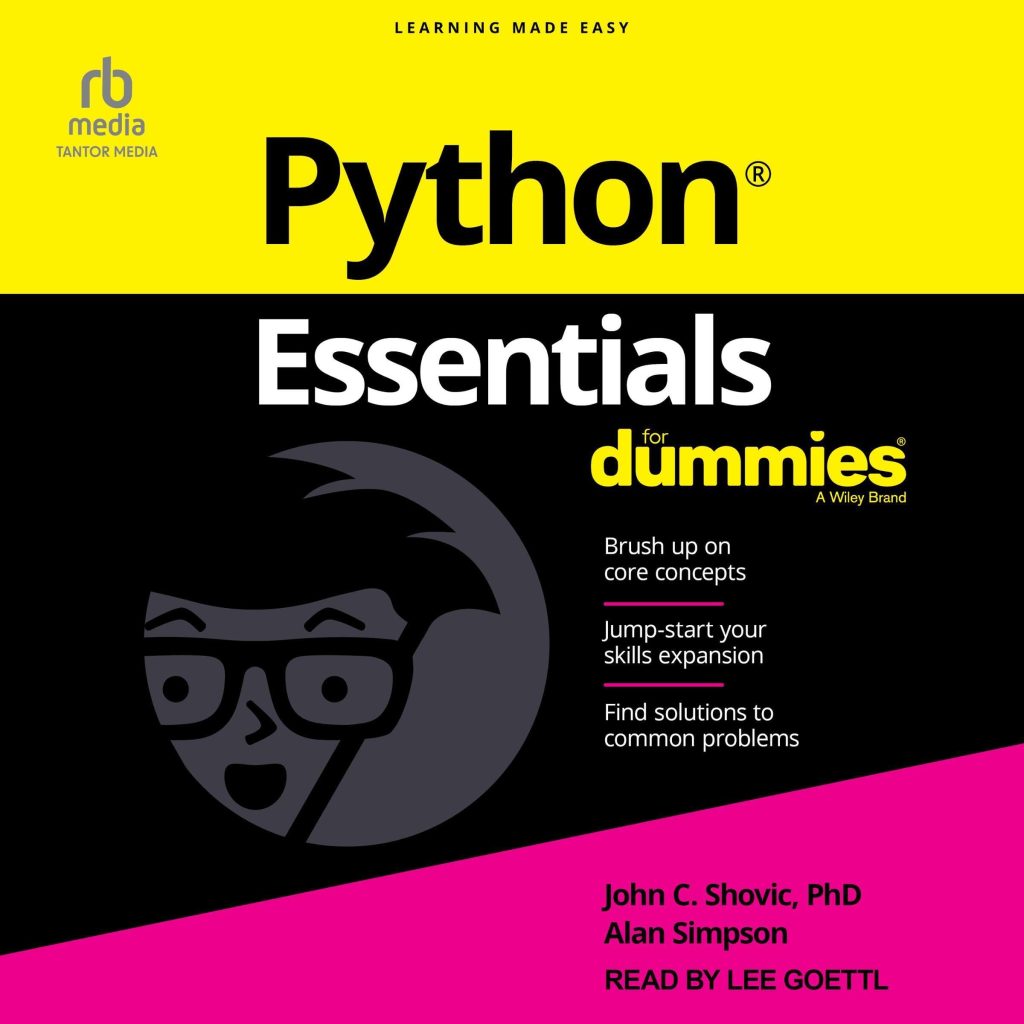
Time series analysis is an important field in data science and machine learning, dealing with the study and modeling of data collected over time. It finds applications across various domains, including finance, economics, meteorology, and many more. The primary goal of time series analysis is to understand the underlying patterns and trends present in the data, enabling accurate forecasting of future values.
A time series is a sequence of data points indexed by time, typically measured at regular intervals. These intervals can be minutes, hours, days, months, or even years, depending on the context. Time series data often exhibits certain characteristics, such as trends (long-term increasing or decreasing patterns), seasonality (periodic fluctuations), and cyclical patterns.
Time series analysis involves several key tasks, including:
- Visualizing and summarizing the time series data to identify patterns, trends, and anomalies.
- Checking if the time series is stationary (statistical properties like mean and variance remain constant over time) or non-stationary, as this impacts the choice of modeling techniques.
- Removing trends and seasonal components from the data to reveal the underlying patterns.
- Building models to predict future values based on historical data and identified patterns.
Time series forecasting is a critical component of time series analysis, enabling organizations to make informed decisions and plan for the future. Accurate forecasting can lead to improved resource allocation, inventory management, demand planning, and risk mitigation.
“Time series analysis is a powerful tool for understanding the past, monitoring the present, and predicting the future.” – Rob J. Hyndman
With the advent of powerful machine learning frameworks like PyTorch, time series analysis and forecasting have become more accessible and efficient. PyTorch’s flexible and intuitive architecture, combined with its support for GPU acceleration, makes it a compelling choice for building advanced time series forecasting models.
PyTorch Basics for Time Series Forecasting
PyTorch is a popular open-source machine learning framework developed by Facebook’s AI Research lab. While initially designed for computer vision and natural language processing tasks, PyTorch has evolved to become a versatile tool for various machine learning applications, including time series forecasting.
One of the key advantages of using PyTorch for time series forecasting is its ability to handle dynamic computational graphs and define custom neural network architectures. This flexibility allows researchers and practitioners to experiment with different model architectures and tailor them to the specific characteristics of their time series data.
PyTorch provides several essential building blocks for time series forecasting models, including:
- PyTorch’s core data structure, which enables efficient computations on multi-dimensional arrays, making it well-suited for handling time series data.
- PyTorch offers a wide range of pre-built layers, such as convolutional layers, recurrent layers (e.g., LSTMs and GRUs), and fully connected layers, which can be combined to create complex neural network architectures for time series forecasting.
- PyTorch’s automatic differentiation engine, which enables efficient computation of gradients during the training process, making it easier to optimize neural network models for time series forecasting.
- PyTorch provides various optimization algorithms, such as Stochastic Gradient Descent (SGD), Adam, and RMSProp, which can be used to train time series forecasting models effectively.
To illustrate the use of PyTorch for time series forecasting, let’s consider a simple example of building a basic recurrent neural network (RNN) model for univariate time series forecasting:
import torch
import torch.nn as nn
# Define the RNN model
class TimeSeriesForecaster(nn.Module):
def __init__(self, input_size, hidden_size, output_size):
super(TimeSeriesForecaster, self).__init__()
self.rnn = nn.RNN(input_size, hidden_size, batch_first=True)
self.fc = nn.Linear(hidden_size, output_size)
def forward(self, x):
out, _ = self.rnn(x)
out = self.fc(out[:, -1, :])
return out
# Create an instance of the model
model = TimeSeriesForecaster(input_size=1, hidden_size=32, output_size=1)
# Define the loss function and optimizer
criterion = nn.MSELoss()
optimizer = torch.optim.Adam(model.parameters(), lr=0.01)
# Training loop
for epoch in range(num_epochs):
inputs = torch.from_numpy(train_data).unsqueeze(2).float()
targets = torch.from_numpy(train_labels).float()
optimizer.zero_grad()
outputs = model(inputs)
loss = criterion(outputs, targets)
loss.backward()
optimizer.step()
# Evaluate the model on validation data
val_inputs = torch.from_numpy(val_data).unsqueeze(2).float()
val_targets = torch.from_numpy(val_labels).float()
val_outputs = model(val_inputs)
val_loss = criterion(val_outputs, val_targets)
print(f'Epoch: {epoch+1}, Loss: {loss.item()}, Val Loss: {val_loss.item()}')
In this example, we define a simple RNN model using PyTorch’s `nn.RNN` layer, followed by a fully connected layer. The model takes a sequence of input data and predicts the next value in the time series. The training process involves minimizing the mean squared error (MSE) loss between the model’s predictions and the actual target values using an optimization algorithm like Adam.
While this example demonstrates a basic RNN model, PyTorch’s flexibility allows researchers and practitioners to explore more advanced architectures, such as long short-term memory (LSTM) networks, convolutional neural networks (CNNs), and hybrid models that combine different types of neural network layers. Additionally, PyTorch supports various techniques for improving model performance, such as regularization, dropout, and attention mechanisms.
Preprocessing Time Series Data
Preprocessing time series data is an important step in time series analysis and forecasting, as it can significantly impact the performance of the models. The goal of preprocessing is to transform the raw data into a format suitable for analysis and modeling. Here are some common preprocessing techniques for time series data in PyTorch:
1. Data Cleaning and Handling Missing Values
Time series data often contains missing values or outliers that can affect the accuracy of the models. PyTorch provides various functions to handle missing values, such as `torch.nan_to_num()` and `torch.isnan()`. Additionally, you can use interpolation techniques or imputation methods to fill in missing values.
import torch # Example data with missing values data = torch.tensor([1.0, 2.0, torch.nan, 4.0, 5.0]) # Replace NaN values with 0 data = torch.nan_to_num(data, nan=0.0) # Interpolate missing values idx = torch.isnan(data) data[idx] = torch.interpolate(data[~idx], idx.nonzero().squeeze())
2. Normalization and Scaling
Time series data often contains features with different scales, which can lead to numerical instability and slow convergence during training. Normalization and scaling techniques, such as min-max scaling or z-score normalization, can help mitigate this issue.
import torch # Example data data = torch.tensor([1.0, 5.0, 10.0, 15.0, 20.0]) # Min-max scaling data_scaled = (data - data.min()) / (data.max() - data.min()) # Z-score normalization data_normalized = (data - data.mean()) / data.std()
3. Temporal Resampling
Time series data can have different sampling frequencies, and it’s often necessary to resample the data to a consistent frequency for analysis and modeling. PyTorch provides functions like `torch.bucketize()` and `torch.unique_consecutive()` to resample time series data.
import torch # Example data with irregular time intervals time = torch.tensor([1, 2, 3, 5, 7, 8, 9]) values = torch.tensor([1.0, 2.0, 3.0, 4.0, 5.0, 6.0, 7.0]) # Resample to regular intervals new_time = torch.arange(1, 10) new_values = torch.bucketize(new_time, time).bincount(values, minlength=len(new_time))
4. Differencing and Detrending
Many time series exhibit trends or non-stationarity, which can affect the accuracy of forecasting models. Differencing and detrending techniques can help remove these patterns and make the data stationary.
import torch # Example data with trend data = torch.tensor([1.0, 2.0, 3.0, 4.0, 5.0]) # Differencing data_diff = data[1:] - data[:-1] # Detrending (linear) time = torch.arange(len(data)) coeffs = torch.lstsq(time.view(-1, 1), data).solution trend = coeffs[0] * time + coeffs[1] data_detrended = data - trend
5. Windowing and Sequence Generation
Many time series forecasting models, such as recurrent neural networks (RNNs) and convolutional neural networks (CNNs), require the input data to be in a specific sequence format. Windowing techniques can be used to create overlapping sequences from the time series data.
import torch
# Example data
data = torch.tensor([1.0, 2.0, 3.0, 4.0, 5.0, 6.0])
# Windowing
window_size = 3
sequences = []
for i in range(len(data) - window_size + 1):
sequences.append(data[i:i+window_size])
sequences = torch.stack(sequences)
These preprocessing techniques can significantly improve the quality of the time series data and enhance the performance of forecasting models. However, it is important to note that the specific preprocessing steps may vary depending on the characteristics of the data and the requirements of the forecasting task.
Building Time Series Forecasting Models with PyTorch
Building effective time series forecasting models with PyTorch involves several key steps. In this section, we’ll explore how to construct neural network architectures tailored for time series data and train them using PyTorch’s flexible framework.
Sequence-to-Sequence Models
One popular approach for time series forecasting is to treat the problem as a sequence-to-sequence task, where the model learns to map a sequence of past observations to a sequence of future values. Recurrent Neural Networks (RNNs), such as Long Short-Term Memory (LSTM) and Gated Recurrent Unit (GRU) networks, are well-suited for this task due to their ability to capture temporal dependencies in sequential data.
import torch
import torch.nn as nn
# Define the LSTM model
class LSTMForecaster(nn.Module):
def __init__(self, input_size, hidden_size, output_size, num_layers):
super(LSTMForecaster, self).__init__()
self.lstm = nn.LSTM(input_size, hidden_size, num_layers, batch_first=True)
self.fc = nn.Linear(hidden_size, output_size)
def forward(self, x):
out, _ = self.lstm(x)
out = self.fc(out[:, -1, :])
return out
# Create an instance of the model
model = LSTMForecaster(input_size=1, hidden_size=64, output_size=1, num_layers=2)
In this example, we define an LSTM model with customizable input size, hidden size, output size, and number of layers. The model takes a sequence of input data and predicts the next value in the time series. During training, the model learns to capture the temporal dependencies in the data and make accurate forecasts.
Convolutional Neural Networks
While RNNs are a natural choice for time series forecasting, Convolutional Neural Networks (CNNs) can also be effective, particularly when dealing with time series data that exhibits local patterns or seasonality. CNNs can learn to extract relevant features from the input data and capture local dependencies.
import torch
import torch.nn as nn
# Define the CNN model
class CNNForecaster(nn.Module):
def __init__(self, input_size, output_size):
super(CNNForecaster, self).__init__()
self.conv1 = nn.Conv1d(input_size, 64, kernel_size=3, padding=1)
self.conv2 = nn.Conv1d(64, 32, kernel_size=3, padding=1)
self.fc = nn.Linear(32, output_size)
def forward(self, x):
x = x.permute(0, 2, 1) # Reshape for Conv1d
x = nn.functional.relu(self.conv1(x))
x = nn.functional.relu(self.conv2(x))
x = torch.mean(x, dim=2) # Global average pooling
x = self.fc(x)
return x
# Create an instance of the model
model = CNNForecaster(input_size=1, output_size=1)
In this example, we define a CNN model with two convolutional layers and a fully connected layer. The model takes a sequence of input data and predicts the next value in the time series. The convolutional layers extract features from the input data, and the fully connected layer maps these features to the output.
Hybrid Models
In some cases, combining different neural network architectures can lead to improved performance for time series forecasting. For example, you can combine CNNs and RNNs to capture both local patterns and long-term dependencies in the data.
import torch
import torch.nn as nn
# Define the hybrid model
class HybridForecaster(nn.Module):
def __init__(self, input_size, hidden_size, output_size):
super(HybridForecaster, self).__init__()
self.conv1 = nn.Conv1d(input_size, 64, kernel_size=3, padding=1)
self.lstm = nn.LSTM(64, hidden_size, batch_first=True)
self.fc = nn.Linear(hidden_size, output_size)
def forward(self, x):
x = x.permute(0, 2, 1) # Reshape for Conv1d
x = nn.functional.relu(self.conv1(x))
x = x.permute(0, 2, 1) # Reshape for LSTM
out, _ = self.lstm(x)
out = self.fc(out[:, -1, :])
return out
# Create an instance of the model
model = HybridForecaster(input_size=1, hidden_size=64, output_size=1)
In this example, we define a hybrid model that combines a convolutional layer and an LSTM layer. The convolutional layer extracts local features from the input data, and the LSTM layer captures long-term dependencies. The fully connected layer maps the output of the LSTM to the final forecast.
Training these models in PyTorch involves defining a loss function (e.g., mean squared error), an optimization algorithm (e.g., Adam or SGD), and iterating over the training data in mini-batches. PyTorch’s automatic differentiation and GPU support can significantly accelerate the training process.
It’s important to note that the choice of model architecture and hyperparameters (e.g., number of layers, hidden size, learning rate) depends on the characteristics of the time series data and the specific forecasting task. Experimentation and validation on a separate test set are crucial to ensure the model’s performance and generalization ability.
Evaluating and Improving Time Series Forecasting Models
Evaluating the performance of time series forecasting models is important to ensure their accuracy and reliability. PyTorch provides various tools and metrics to assess the quality of forecasts and identify areas for improvement. Here are some common techniques for evaluating and improving time series forecasting models in PyTorch:
1. Loss Functions
Loss functions measure the discrepancy between the model’s predictions and the actual target values. Common loss functions for time series forecasting include:
- Mean Squared Error (MSE)
- Mean Absolute Error (MAE)
- Huber Loss
These loss functions can be easily implemented and optimized using PyTorch’s built-in functions:
import torch.nn.functional as F mse_loss = F.mse_loss(predictions, targets) mae_loss = F.l1_loss(predictions, targets) huber_loss = F.huber_loss(predictions, targets, delta=1.0)
2. Evaluation Metrics
In addition to loss functions, several evaluation metrics are commonly used to assess the performance of time series forecasting models:
- Mean Absolute Percentage Error (MAPE)
- Root Mean Squared Error (RMSE)
- Coefficient of Determination (R-squared)
These metrics can be calculated using PyTorch tensors and custom functions:
import torch
def mape(predictions, targets):
return torch.mean(torch.abs((predictions - targets) / targets)) * 100
def rmse(predictions, targets):
return torch.sqrt(F.mse_loss(predictions, targets))
def r_squared(predictions, targets):
ss_res = torch.sum((predictions - targets) ** 2)
ss_tot = torch.sum((targets - torch.mean(targets)) ** 2)
return 1 - (ss_res / ss_tot)
3. Cross-Validation
Cross-validation is a technique used to assess the generalization performance of a model and prevent overfitting. In time series forecasting, it’s common to use techniques like walk-forward validation or rolling window validation, where the model is trained on a subset of the data and evaluated on a subsequent portion.
import numpy as np
def walk_forward_validation(data, model, window_size, forecast_horizon):
forecasts = []
for i in range(len(data) - window_size - forecast_horizon + 1):
train_data = data[i:i+window_size]
test_data = data[i+window_size:i+window_size+forecast_horizon]
model.fit(train_data)
forecast = model.predict(test_data)
forecasts.append(forecast)
return np.concatenate(forecasts)
4. Model Ensembling
Ensembling is a technique that combines the predictions of multiple models to improve overall performance. In PyTorch, you can create ensembles of different model architectures or models trained with different hyperparameters.
import torch
class EnsembleForecaster(nn.Module):
def __init__(self, models):
super(EnsembleForecaster, self).__init__()
self.models = nn.ModuleList(models)
def forward(self, x):
predictions = torch.stack([model(x) for model in self.models], dim=-1)
return torch.mean(predictions, dim=-1)
In this example, the `EnsembleForecaster` class takes a list of models and averages their predictions during inference.
5. Hyperparameter Tuning
Optimizing the hyperparameters of a time series forecasting model, such as the learning rate, number of layers, and regularization techniques, can significantly improve its performance. PyTorch integrates well with libraries like Ray Tune and Optuna, which provide efficient hyperparameter tuning algorithms.
import optuna
def objective(trial):
lr = trial.suggest_float("lr", 1e-5, 1e-2, log=True)
num_layers = trial.suggest_int("num_layers", 1, 4)
dropout = trial.suggest_float("dropout", 0.0, 0.5)
model = LSTMForecaster(input_size=1, hidden_size=64, output_size=1, num_layers=num_layers, dropout=dropout)
optimizer = optim.Adam(model.parameters(), lr=lr)
# Train and evaluate the model
...
return validation_loss
study = optuna.create_study()
study.optimize(objective, n_trials=100)
By using these techniques, you can evaluate the performance of your time series forecasting models, identify areas for improvement, and iteratively refine the models to achieve better accuracy and reliability.






